Growing indoor plants from cuttings is one of the most rewarding and cost-effective ways to expand your plant collection. It’s a magical process — you take a small piece of a healthy plant, nurture it with care, and soon enough, it grows roots and becomes a thriving new houseplant. Not only does this save money, but it also strengthens your bond with nature, giving you the joy of watching life begin from something so simple.
The best part? You don’t need a green thumb or fancy tools to do it. Many popular indoor plants can be easily propagated through cuttings with minimal effort. Whether you’re new to plant care or an experienced gardener looking to multiply your greenery, this guide will walk you through the easiest indoor plants to grow from cuttings, complete with detailed steps and expert tips for successful propagation.
Understanding Plant Propagation

Before diving into the specific plants, let’s understand what propagation means.
Propagation is the process of creating new plants from existing ones. When you take a cutting, you’re essentially cloning the parent plant by growing new roots from a stem, leaf, or node. There are several methods—water propagation, soil propagation, and using growth hormones—but for most indoor plants, stem cuttings in water or soil work beautifully.
Why Grow Plants From Cuttings?
- It’s free and sustainable.
- You get faster results than growing from seeds.
- It allows you to share plants with friends and family.
- It’s an educational and satisfying hands-on experience.
Now, let’s explore the easiest indoor plants you can grow successfully from cuttings.
1. Pothos (Epipremnum aureum)
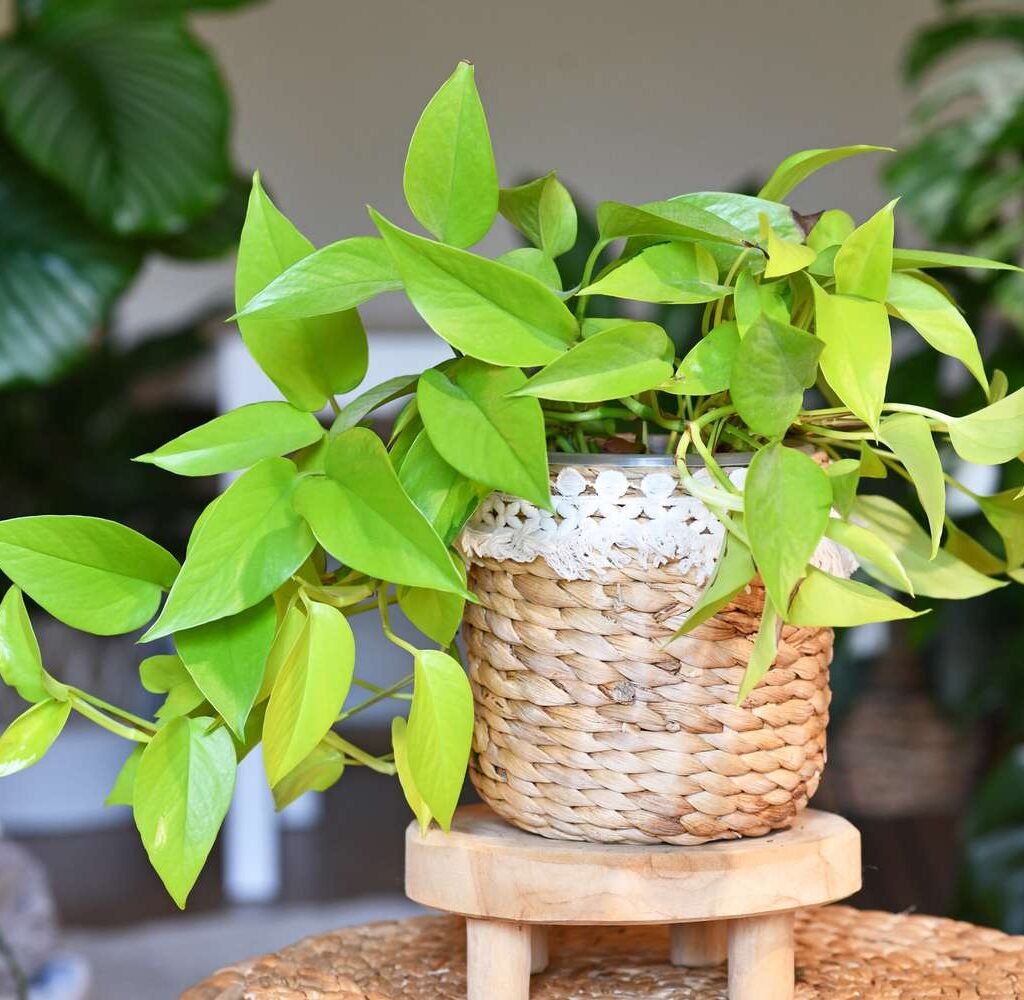
Why It’s Easy:
Pothos is perhaps the most beginner-friendly plant to propagate. Known for its hardy nature and fast growth, pothos can develop roots in just 1–2 weeks, even in low light conditions.
How to Propagate:
- Cut a 4–6 inch section of stem just below a node (the small bump where leaves emerge).
- Remove the lower leaves, leaving two or three at the top.
- Place the cutting in a jar of water, ensuring the node is submerged.
- Change the water every few days to keep it fresh.
- Once roots are 2–3 inches long, transplant into soil.
Extra Tip:
Keep your jar near bright, indirect light. Avoid direct sunlight—it can heat the water and damage tender roots.
Pothos varieties like Golden Pothos, Marble Queen, and Neon Pothos all propagate with equal ease.
2. Spider Plant (Chlorophytum comosum)
Why It’s Easy:
Spider plants produce baby plantlets, or “pups,” that hang from long stems. These little offshoots already have small roots, making propagation almost effortless.
How to Propagate:
- Gently snip off a plantlet from the mother plant.
- Place it in water or directly into moist potting soil.
- Keep the soil consistently damp and provide bright, indirect light.
- Within a few weeks, roots will establish and growth will accelerate.
Extra Tip:
You can also leave the baby attached to the mother plant while placing its roots in soil nearby. Once established, simply cut the connection.
Spider plants are tough survivors that can adapt to most indoor conditions—making them a must-have for propagation beginners.
3. Philodendron (Heartleaf Philodendron)
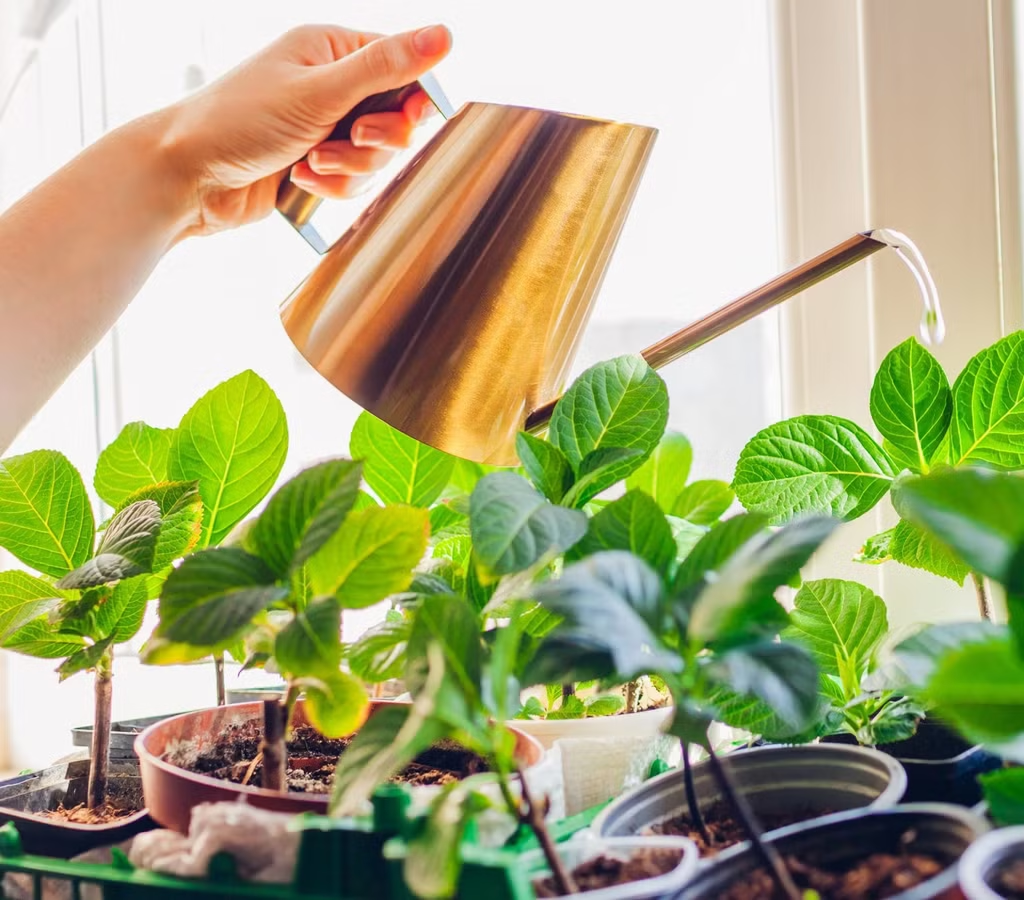
Why It’s Easy:
Philodendrons are fast-growing vining plants that respond wonderfully to cutting propagation. Their stems are soft, flexible, and rich in growth nodes, allowing roots to form quickly in water.
How to Propagate:
- Choose a healthy vine and cut just below a leaf node, ensuring each cutting has at least one or two leaves.
- Remove any leaves near the base of the cutting.
- Place the cutting in a glass of clean water.
- Change water every few days. Roots should appear in about 10–15 days.
- Transfer to soil once roots are well developed.
Extra Tip:
Add a little liquid rooting hormone to the water for even faster results.
Varieties like Heartleaf Philodendron, Brazil Philodendron, and Micans Philodendron all propagate easily, adding lush green vibes to any space.
4. English Ivy (Hedera helix)
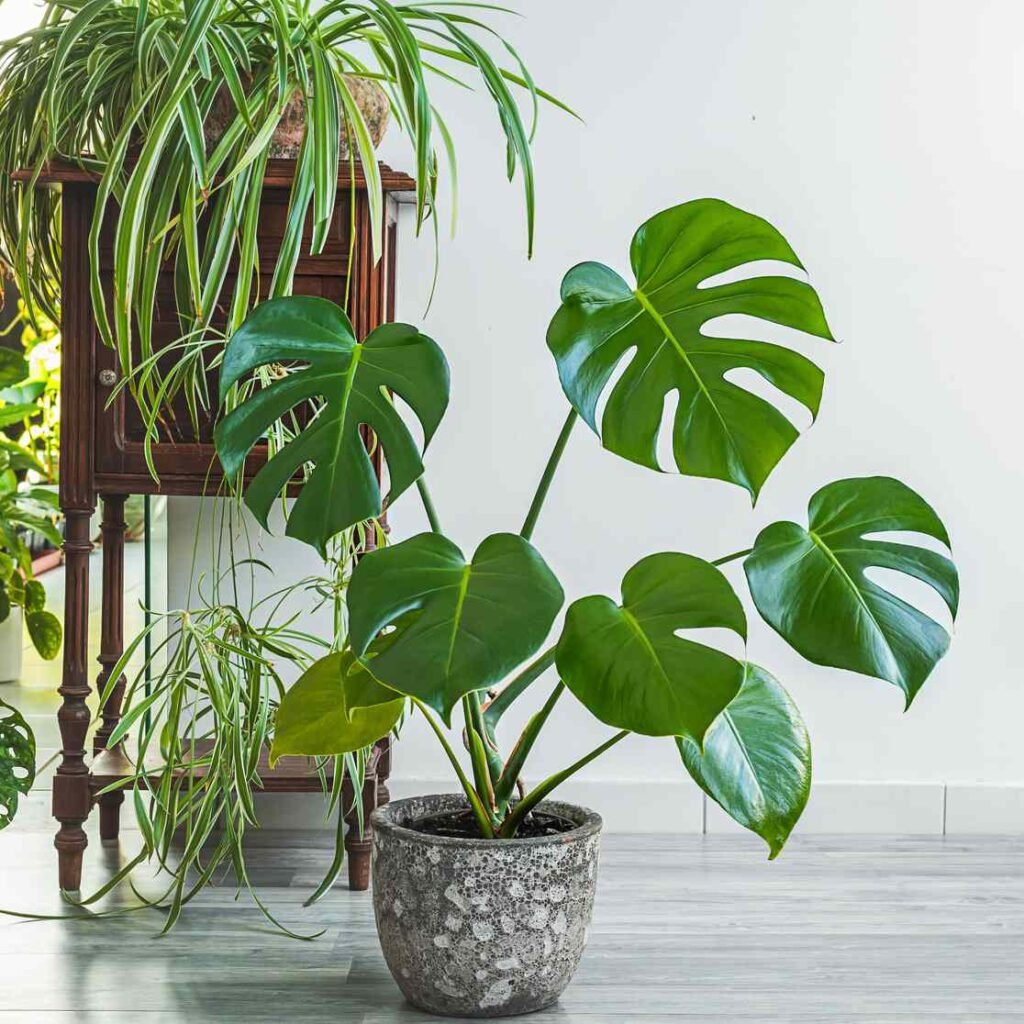
Why It’s Easy:
English ivy is another classic indoor plant that grows vigorously from cuttings. Its climbing nature makes it perfect for hanging baskets and wall displays.
How to Propagate:
- Snip 4–5 inch cuttings from a healthy vine, just below a leaf node.
- Remove leaves from the bottom 2 inches of the cutting.
- Place the stem in water or directly in moist potting mix.
- Keep in bright, indirect light until new roots form (usually within 2–3 weeks).
Extra Tip:
To prevent fungal issues, ensure good air circulation and avoid letting water touch the leaves during propagation.
Once rooted, English ivy grows fast and can easily cover trellises or drape gracefully from shelves.
5. ZZ Plant (Zamioculcas zamiifolia)
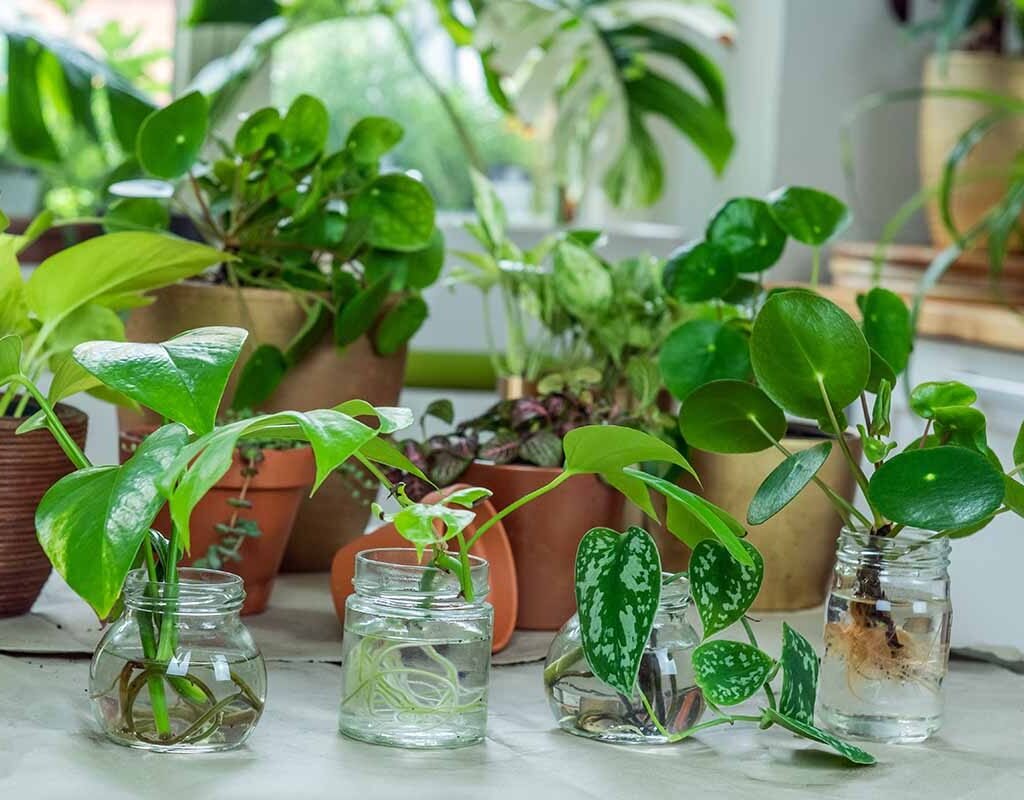
Why It’s Easy:
The ZZ plant is nearly indestructible and can even be propagated from a single leaf or a stem cutting. Though it grows slowly, it’s one of the most resilient indoor plants to root and maintain.
How to Propagate:
- Cut a healthy stem or remove a single leaf from the parent plant.
- Place it in water or plant it directly into moist soil.
- Be patient—roots can take 6–8 weeks to develop, followed by bulb-like rhizomes.
- Keep the cutting in moderate light and avoid overwatering.
Extra Tip:
Soil propagation tends to work better for ZZ plants than water. Keep the soil slightly moist but never soggy.
The ZZ’s waxy green leaves make it an elegant addition to any indoor collection, and propagation ensures you can grow more of this stylish, low-maintenance plant with ease.
6. Chinese Money Plant (Pilea peperomioides)
Why It’s Easy:
This trendy “friendship plant” is famous for producing baby offshoots, known as pups, around its base. These pups are incredibly easy to detach and root, making propagation fun and rewarding.
How to Propagate:
- Wait until a pup is at least 2–3 inches tall.
- Gently dig around the base and cut it off with a clean knife, ensuring some roots come with it.
- Plant the pup in fresh, well-draining soil and water lightly.
- Keep it in bright, indirect sunlight.
Extra Tip:
If the pup has no roots, place it in water for a week or two before potting it.
Pilea plants not only multiply quickly but also make perfect gifts for friends—hence the nickname “friendship plant.”
7. Tradescantia (Wandering Jew / Inch Plant)
Why It’s Easy:
Tradescantia species are among the fastest to propagate. With colorful striped or purple leaves, these plants root almost instantly in water and grow vigorously.
How to Propagate:
- Cut 4–6 inch sections of stem just below a node.
- Remove a few lower leaves and place the cuttings in water.
- Within a week, new roots will begin to form.
- Transfer to soil after roots reach about 2 inches in length.
Extra Tip:
Tradescantia loves bright light, so keep your new cuttings near a sunny window. Pinch off growing tips regularly to encourage bushier growth.
8. Coleus
Why It’s Easy:
Coleus plants are adored for their vibrant, multi-colored foliage. They root quickly in water, often within just a few days, making them perfect for beginners.
How to Propagate:
- Cut a 4-inch stem just below a leaf node.
- Remove the bottom leaves and place the cutting in water.
- Keep it in indirect light and refresh the water regularly.
- When roots appear, plant in a rich, moist potting mix.
Extra Tip:
Coleus cuttings can grow year-round indoors, so you can easily maintain a colorful collection without buying new plants.
9. Peace Lily (Spathiphyllum)
Why It’s Easy:
Though peace lilies are usually propagated by division, small offshoots from mature plants can also be separated and rooted with minimal effort.
How to Propagate:
- Gently remove the parent plant from its pot.
- Locate a clump of leaves with its own root system.
- Separate it carefully using a clean knife or by hand.
- Plant each division into fresh soil and water thoroughly.
Extra Tip:
Peace lilies prefer consistently moist soil and moderate, indirect light for the best growth.
10. African Violet (Saintpaulia)
Why It’s Easy:
African violets are delicate but surprisingly easy to grow from leaf cuttings. With proper humidity, they root quickly and reward you with vibrant blooms.
How to Propagate:
- Cut a healthy leaf with about 1 inch of stem attached.
- Place it in moist, well-draining soil at a 45° angle.
- Cover it with a clear plastic bag to maintain humidity.
- New baby plants will sprout in about 4–6 weeks.
Extra Tip:
Avoid direct sunlight; bright, filtered light works best. Keep the soil evenly moist but never soggy.
Propagation Success Tips
To ensure consistent results when growing indoor plants from cuttings:
- Use sterilized scissors or pruning shears to prevent infections.
- Maintain warm temperatures (20–25°C / 68–77°F) for faster rooting.
- Provide humidity by misting or covering with a plastic dome.
- Be patient—some plants take longer than others to root.
- Once rooted, gradually acclimate cuttings to normal indoor conditions before transplanting.
Conclusion
Propagating indoor plants from cuttings is more than just an affordable way to expand your collection—it’s a creative, rewarding, and eco-friendly gardening practice. With plants like pothos, philodendron, spider plant, ZZ plant, and pilea, success is almost guaranteed even for beginners.
By mastering this simple technique, you’ll not only fill your home with greenery but also experience the deeper joy of nurturing life from a single cutting—a true celebration of patience, growth, and connection with nature.
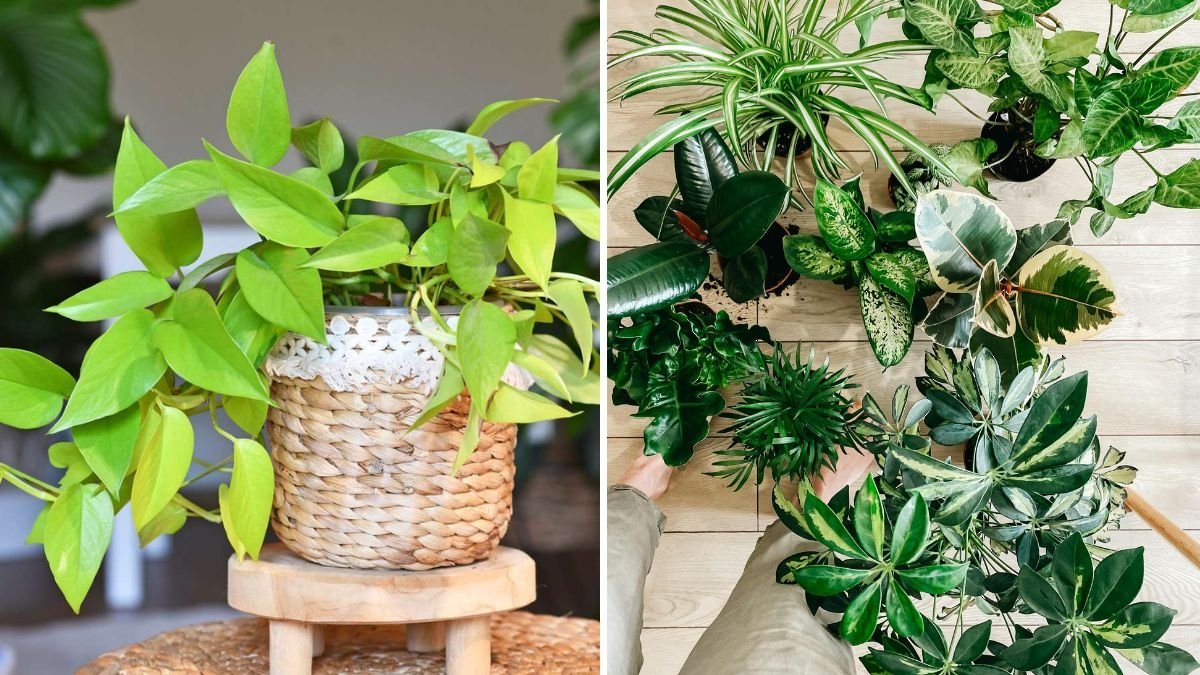




Leave A Comment